BRITISH CHALK ECHINOIDS
(Sea Urchins)
| CIDAROIDS | OTHER REGULARS | IRREGULARS |
| CIDAROIDA | ECHINOTHURIOIDA; DIADEMATOIDA; SALENOIDA, | HOLECTYPOIDA; ECHINONEOIDA; |
| PHYMOSOMATOIDA; TEMNOPLEURIOIDA | HOLASTEROIDA; SPATANGOIDA | |
| Introduction |
The echinoids, or sea-urchins, form a large and particularly diverse component of the Chalk fauna. This successful group of invertebrates dwell on and within sediments of the sea-floor and possess a globular body contained within a plated calcareous shell (test) armoured with a multitude of variably formed spines. The test is divided by five ambulacral columns, along which tube feet of various function protrude via paired pores. From the collectors point of view, chalk echinoids can be placed into three convenient categories of occurrence and preservational style: Cidaroids, Other regulars, and Irregulars.
Cidaroids (e.g. Tylocidaris clavigera) are robust regular echinoids of the order Cidaroida, with large and highly developed primary spines. Isolated spines and test elements are commonly found, but it is unusual to find anything approaching a whole individual. When individuals are found it is typically as a disarticulated and incomplete cluster of spines and test fragments. Articulated specimens are extremely rare (examples). Whilst the tests tend to vary only subtly between species, the spines can be very characteristic and it is these that are of most use when identifying a specimen. Some of the more common spines are shown below. (Terminology)
Other regulars (e.g. Gautheria spatulifera) are typically found as complete but isolated tests. Only rarely is a complement of elongate primary spines present (examples). (Terminology).
Irregulars (e.g. Echinocorys scutata) are far more common than the regulars, and usually occur as complete but isolated tests. It is highly unusual for an irregular to be found with any of its reduced and specialised spine complement present (example). (Terminology).
| Species |
| CIDAROIDS | |||
| CIDAROIDA | |||
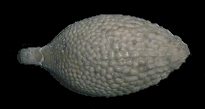 |
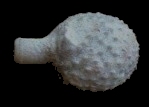 |
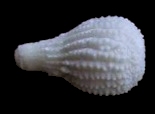 |
 |
| 'Cidaris' strombecki | Tylocidaris velifera | Tylocidaris clavigera | Tylocidaris asperula |
| -- | |||
 | |||
| Temnocidaris dissimilis | |||
| OTHER REGULARS | |||
| ECHINOTHURIOIDA | DIADEMATOIDA | ||
|
|
|
||
| Echinothuria floris | Centrostephanus fragilis | ||
| SALENOIDA | |||
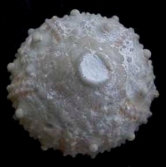 |
 |
||
| Salenia geometrica | Bathysalenia granulosa | ||
| IRREGULARS | |||
| ECHINONEOIDA | |||
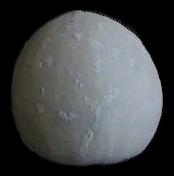 |
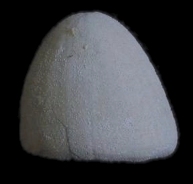 |
||
| Conulus subrotundus | Conulus albogalerus | ||
| References |
DURHAM, J.W., FELL, H. B., FISCHER, A. G., KIER, P. M., MELVILLE, R. V., PAWSON, D. L., and WAGNER, C. D. 1966. Echinoids, in: Moore (Ed.), Treatise on Invertebrate Paleontology, part U: Echinodermata 3, Lawrence, Kansas.
SMITH, A. B., and WRIGHT, C. W. 1989-2000. British Cretaceous Echinoids, Palaeontographical Society.
STOKES, R. B. 1977. The echinoids Micraster and Epiaster from the Turonian and Senonian of England, Palaeontology, 20, 805-821.
WRIGHT, C. W., and SMITH, A. B. 2002. Echinoderms, in: Fossils of the Chalk (2nd Edition), Smith A. B. & Batten D.J. (Ed.s), Palaeontological Field Guide to Fossils, No. 2 , Palaeontological Association, London.
WRIGHT, T. 1864-1882. A monograph on the British fossil Echinodermata from the Cretaceous Formations. I, the Echinoidea, Palaeontographical Society.